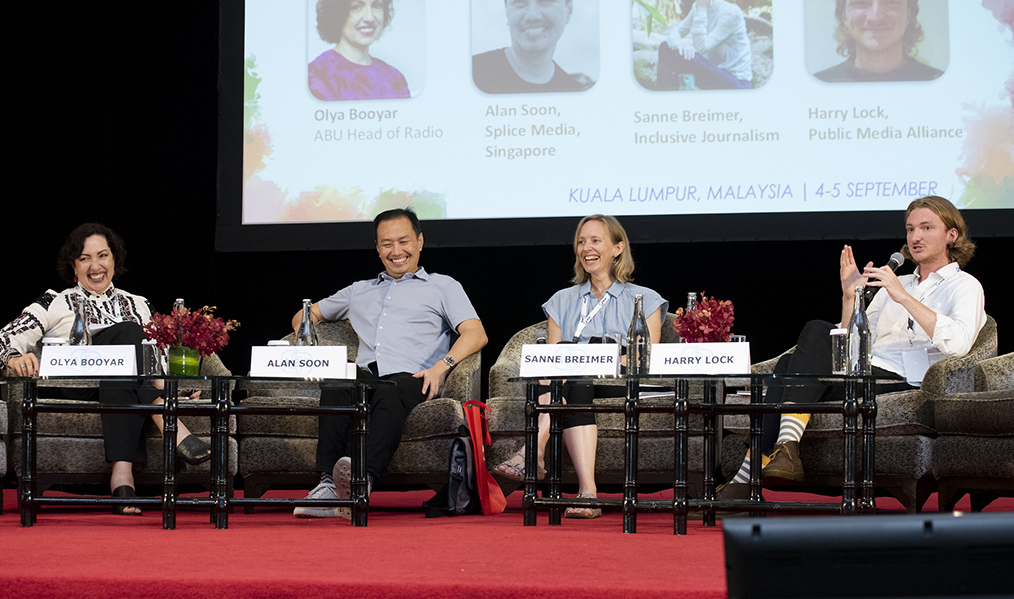
Audience response key to choosing online platforms for radio
Broadcasters should involve their audiences when deciding how to move services to digital and online platforms, radio industry experts have warned.
The advice came from a special panel on social media and platforms at this year’s RadioAsia Conference in Kuala Lumpur, Malaysia.
Under the conference’s umbrella theme of “Smart, Social and Everywhere”, members of the panel were asked to advise on what’s hot and what’s not in social media tools.
They included Alan Soon of Splice Media Singapore, Sanne Breimer of Inclusive Journalism and Harry Lock of the Public Media Alliance, formerly the Commonwealth Broadcasting Association. ABU Head of Radio Olya Booyar moderated the session.
Mr Soon, a pioneer of audio-over-the-Internet from the 1990s, noted how the fragmentation of the mass media was accelerating and felt that broadcasters would thrive and survive if they turned this to their advantage by concentrating on niche services for their online presence, partly because they required less marketing effort.
“Niche means people know what they are looking for,” he said. Niche services were not necessarily small; they could appeal to large numbers of people and even time slots could be niche.
He said mass media found it hard to accept that listeners themselves knew what they wanted, but broadcasters needed to listen to their listeners more.
“The best way of choosing new platforms is to put content out there and see how they respond,” he said.
He warned that this approach required the broadcasters to understand what audiences were looking for might not be expressed in words the industry traditionally uses.
“Terms such as ‘news’ or ‘journalism’ don’t mean the same for some young social media users as they do for producers.”
Sanne Breimer, whose career has included youth stations, agreed that broadcasters needed to connect to their younger audiences and get over the fear of losing their status as experts, so stop building walls to their listeners.
She cautioned against broadcasters trying to cover too many social media platforms.
“Most [broadcasters] want to be present on all social media platforms,” she said. “But before you decide, you should look at which you really need and can resource. It’s smarter to pick one or two platforms and do them well.”
She said younger staff were more clear-eyed about what was working for audiences and she advised inviting young people to take part in focus groups to discuss who they are and what they use.
Harry Lock said it was important to analyse what content worked well on specific platforms, whether there were audiences and which were the best platforms for the organisation.
He said public service broadcasters shared common values such as reliability and trustworthiness, which also had to be taken into account when selecting new platforms.
He also felt different platforms worked better for different cultures, countries and regions. WhatsApp was proving popular in Africa where video and audio streaming could be prohibitively expensive on data plans.
Asked about which platforms they recommended or avoided, there was general agreement that Facebook had lost its edge and that apps such as TikTok were increasingly popular, especially amongst younger people who didn’t care so much about the family aspects of Facebook. Youngsters were looking for what Mr Soon called “random stuff” on TikTok, though for broadcasters this might increase the chances of young people stumbling across radio online content.
“The challenge today is to make your digital content more discoverable,” he said.
Asked for one more piece of advice, Ms Breimer suggested established broadcasters should utilise their vast archives of material for posting online, while Mr Lock pressed the case for collaboration between content producers, whoever they were.

